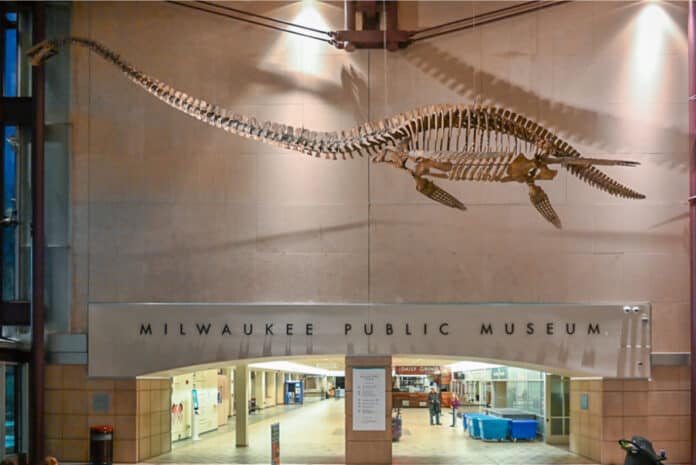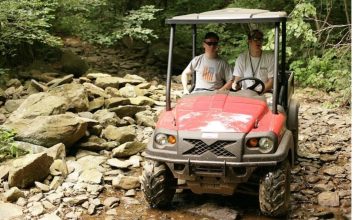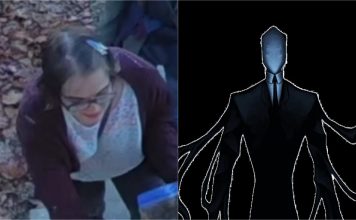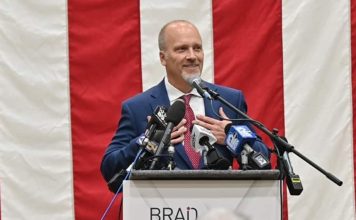Wisconsin Right Now, with a project-specific grant from No Better Friend Corp., Kevin Nicholson’s non-profit organization, is investigating the Milwaukee County Museum’s rhetoric, cost estimates and plans for a new museum. Read the entire series here.
“It wasn’t just the public they misled. They told the (Milwaukee County) Board the same thing. No accreditation, no traveling exhibits. That’s what I was told when I was on the board” – former Milwaukee County Supervisor Dan Sebring.
Milwaukee Public Museum leaders are misleading the public and elected officials that they would “lose the ability” to get traveling exhibits without accreditation, Wisconsin Right Now has documented.
Why this matters: To get county officials to approve funding for their new $240 million museum, officials emphasized the need for accreditation from the American Alliance of Museums, which praised efforts for a new building. Essentially, museum leaders claimed that, if they lost accreditation by staying in the old museum, they wouldn’t be able to land big traveling exhibits anymore.
But we’ve discovered that’s simply not true. We contacted and researched several traveling exhibit providers. We could not find a single traveling exhibit that required accreditation.
“It wasn’t just the public they misled. They told the (Milwaukee County) Board the same thing. No accreditation, no traveling exhibits. That’s what I was told when I was on the board,” said former Milwaukee County Supervisor Dan Sebring.
An example: One of the Milwaukee Public Museum’s most prominent traveling exhibits ever was an exhibit of Titanic artifacts. That exhibit is run by an organization called Musealia. We contacted Musealia and asked, “Do you require that museums have accreditation to host the exhibit?”
Luis Ferreiro, director/CEO of Musealia, told us they do not require accreditation. “We work with many museums outside the US and therefore it is not a requirement to pertain to this Association in order to host one of our exhibitions (not even in the States),” he said. “However, most of the institutions we work with are members of AAM.”
“There are different matters involved hosting our exhibitions that range from technical (space, location, security, etc) to institutional (topic of the museum) or financial (capacity to attract visitors, ability to cover cots, etc).”
This all continues a troubling pattern of misleading statements and non-transparency by museum officials, who have refused to grant a sit-down interview, have refused to explain which exhibits will be discontinued, have refused to explain which exhibits they are updating for race and equity reasons, and have presented shifting numbers for deferred maintenance to justify the project, which includes $85 million in public money.
“Without accreditation, MPM risks losing federal grants, traveling exhibits, research opportunities, adjunct faculty and the ability to teach museum studies for Wisconsin universities,” museum CEO Ellen Censky told Milwaukee County officials. The slide she presented to the county committee says the museum would “lose the ability to host traveling exhibits (generated $1.2M in net revenue and $1.4M in memberships for last 4 exhibits).”
The committee ended up approving $45 million in county money for the new project, which was then passed by the County Board in a meeting with minimal debate and no public input.
In a press release, Censky called accreditation “essential to securing the future of this beloved institution and maintaining our status and collections as we look to the future.”
The AAM, which accredits museums, is an increasingly “woke” institution. In October, the AAM announced “new requirements” that “will focus on including diversity, equity, accessibility, and inclusion (DEAI) practices” in museums,” and they hosted a task force “identifying core concepts and key indicators museums should keep in mind to support inclusion and equity throughout their structure, programming, culture, strategy, policies, and processes.”
Their strategic plan says the organization believes museums are “essential to communities and to helping society address many of our most pressing issues, from the climate crisis to racism and economic disparity.” AAM pledges to “engage partners, allies, and experts to champion an anti-racism movement.”
The museum provided us with letters sent by AAM praising them for obtaining public funding for a new museum. “We are pleased to learn from the progress report that the county board will be allocating materials funding for temporary collections care,” the organization wrote. “It is also great news that the state allocated $40M towards the new building. For the final report, we will need confirmation of the county’s contribution towards the new building and details on how the county will continue supporting the needs of the collections in the interim.”
The AAM previously wrote the museum that “materials the Commission reviewed are clear and convincing that the building, suffering from years of structural neglect and deferred maintenance, is utterly inadequate to meet even the most minimal standards of care for the collections.” (We have previously documented how it would cost the county less per year to fix the maintenance issues in the old museum than building a new one, however.)
We asked MPM which traveling exhibits specifically require AAM accreditation. They did not respond.
We decided to explore officials’ central claim that the museum would likely lose traveling exhibits without accreditation because it’s so key to their rationale for needing a new facility.
Accreditation is awarded based on “self-study” and peer reviews. In 2021, a re-accreditation decision was tabled by AAM, “citing inadequate facilities due to deferred maintenance and requiring a demonstration of efforts toward the long-term care for the collections entrusted to MPM,” a museum press release says. Read our story on the museum’s shifting deferred maintenance numbers here. The Milwaukee Public Museum received accreditation in August 2022, which usually lasts 10 years.
The rest of the media have essentially functioned as stenographers for museum officials, not checking their rhetoric. “Losing accreditation would have endangered the museum’s ability to host traveling exhibits,” a Milwaukee Journal Sentinel story by Tom Daykin reported.
WTMJ-TV reported, “The museum would also lose out on the chance to host traveling exhibits.”
But that’s false. Here are some other examples:
Smithsonian Institution
We also reached out to the Smithsonian Institution.
“We don’t require accreditation by AAM or other organizations. The Smithsonian Institution Traveling Exhibition Service (SITES) offers exhibitions in a variety of formats, sizes, security levels, and price points. This means there are different hosting requirements for each exhibition,” said Jennifer Schommer, Assistant Director of Public Affairs for the Smithsonian Institution Traveling Exhibition Service.
Little Ray’s Exhibitions – Survival of the Slowest
We also contacted Little Ray’s Exhibitions, which hosts the traveling exhibit, Survival of the Slowest, among others.
“Thank you for reaching out to our organization. I am the exhibits director at Little Ray’s Exhibitions,” Shane McConnell responded.
“We operate in the U.S. and Canada with our exhibits and as well run a number of accredited nature centres and rescues. While we do not require museums we open our exhibits at to be accredited, we do primarily target museums accredited by the AAM and ASTC organizations.”
He added: “We have specific requests when it comes to just temperature, access to the exhibit, and a whole bunch of other requirements. Our organization does fully staff our own exhibits so many of our policies and procedures fall on our organization so that the museum does not need to worry about too much when running the exhibit. We have experienced educators and animal care staff in the exhibit from open to close each day.”
Comment from MPM
We asked for comment from the MPM about our findings; an MPM spokesperson told us,
“Accreditation indicates to other museums and traveling exhibit providers that MPM has met specific, stringent standards to be able to house, display and care for their artifacts. It is typical of traveling exhibit providers to require museums to adhere to these stringent standards before being allowed to house and display their artifacts. Having AAM accreditation is the best way to show these traveling exhibit providers that MPM meets their stringent standards.”
However, we found some other traveling museum exhibitions only had minimum requirements, like square footage, climate control, and proper insurance. Some required a general facility report.
An example of this: Traveling exhibits hosted by The Chicago Academy of Sciences /Peggy Notebaert Nature Museum. Under “Host Requirements,” they list only:
Minimum 4000 sq ft. of gallery space
Minimum 10 ft. high ceilings
In another example, a DePauw University’s exhibit requires only an “AAM General Facility Report, pedestals and vitrines, tv/projector for film.”
AAM does provide a blank template for museums to self-report and then provide to the traveling exhibit lender. According to the AAM, the report “provides the opportunity to record the latest information about an institution’s physical specifications and staff practices. The standard form expedites the exchange of information critical to lenders and insurers.”
On its website, AAM is pretty vague about the benefits of accreditation, saying, “Accreditation increases your museum’s credibility and value to funders, policymakers, insurers, community and peers. Accreditation is a powerful tool to leverage change and helps facilitate loans between institutions.”
They do claim that accreditation is “a valuable tool in lobbying local and state governments” and will lead to “improved relationships with other museums resulting in more loans and traveling exhibitions.”
“Of the nation’s estimated 33,000 museums, 1,096 are currently accredited,” MPM says.
Table of Contents













![Mandela Barnes Said ‘Reducing Prison Populations is Now Sexy’ [VIDEO] Reducing Prison Populations is Now Sexy](https://www.wisconsinrightnow.com/wp-content/uploads/2022/09/Collage-Maker-14-Sep-2022-11.44-AM-356x220.jpg)







![Author Exposes the Tragic Realities of the 2020 Riots & the ‘Gaslighting of America’ [REVIEW] julio roses](https://www.wisconsinrightnow.com/wp-content/uploads/2025/11/MixCollage-21-Nov-2025-02-08-PM-8145-356x220.jpg)











